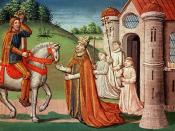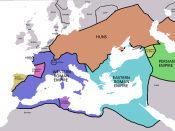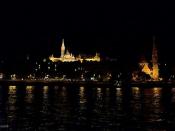The Middle Ages served as a necessary bridge to bring the world from the ancient times in history to what we now consider modern history. It is considered to be more of a period of growth than decline. Without the Middle Ages the world would not have developed and made the grand leap into the Renaissance and the future. After the fall of Rome, in 476 AD, the world was thrown into a period of chaos and disunity that came to be known as the Dark Ages. Politically, economically, and socially, everything of the old system that had been tediously developed in the Roman Empire gave way. A new world arose based on religion, feudalism, and manorialism.
In Medieval times the Roman Catholic Church embedded itself into the very core of everyday life in Europe. Setting before men a definite way of life, the Church served as means of education, spiritual redemption, and was both an important factor in their social and political life.
In such a time of 'chaos' the people turned to the Church to tell them what to do. There was only one church during this time, all Christians belonged to it and in all parts its teachings were the same. In mass the Church interpreted the passages in the Bible for the people, in this way they were able to command the thoughts and beliefs of the lower classes. They also had the power to administer the seven sacraments, which a person needed to be able to enter heaven. With its infinite hold over the people, the Church claimed the right to direct and rule society, slowly becoming more than a spiritual institution.
The Church fulfilled many of the functions of the modern state. It tried civil and criminal cases, and had binding decisions with such...



Very helpful essay
good collection of information.thnx
0 out of 0 people found this comment useful.